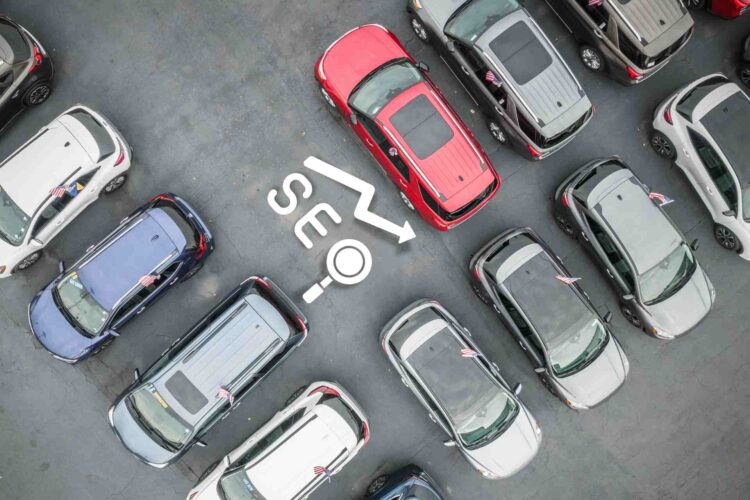
Table of contents:
1. Multilingual SEO Overview
2. Importance for Global Automotive Sites
3. Understanding Multilingual SEO in the Automotive Industry
4. Challenges of Multilingual SEO for Automotive Sites
5. Keyword Research and Content Strategy
6. Website Structure for Multilingual SEO
7. SEO Best Practices for Technical SEO
8. Cultural Customization and Localization
9. Link Building and Local SEO Strategies
11. Analytics and Performance Measurement
12. Multilingual SEO trends for automotive websites in the future
13. Conclusion
Imagine driving through the bustling streets of Tokyo, the serene highways of Sweden, or the vibrant lanes of Brazil. In each of these places, cars speak a universal language, but the people inside them don’t. As an automotive business stepping into global markets, your website must bridge these language gaps effectively. This is where multilingual SEO (Search Engine Optimization) becomes your navigator, guiding potential customers to your site, no matter what language they speak.
Multilingual SEO Overview
In multilingual SEO, your website is optimized so that search engines can serve it in different languages to users. It’s not just about translating content but about crafting a user experience that feels native to every visitor, regardless of their geographic or linguistic background.
Importance for Global Automotive Sites
For automotive brands, whose products inherently promise freedom and adventure, the global market is incredibly lucrative. However, the challenge isn’t just in selling a car but ensuring that consumers in different parts of the world can find your website when they type their local version of “best family car” or “fuel-efficient sedan” into a search engine.
Understanding Multilingual SEO in the Automotive Industry
Definition and Key Concepts
Multilingual SEO involves several key practices: translating content, optimizing keywords for different languages, and configuring technical elements on your website to cater to various regions. This approach ensures that whether a customer searches from Munich or Mexico City, they find content that resonates in their language.
Automotive Websites – Why It Matters
An analysis shows that people are four times more likely to purchase from a website in their native language. Moreover, automotive decisions are significant investments; customers need detailed, trust-building information in a language they understand deeply.
Challenges of Multilingual SEO for Automotive Sites
Language Complexity and Localization
Translating automotive jargon can be as complex as the vehicles themselves. Each market may have specific terms and preferences that standard translations do not capture. For example, what is known as a “sedan” in the U.S. might be a “saloon” in the U.K.
Cultural Sensitivities and Regional Differences
Colors, symbols, and numbers often have different meanings across cultures. For instance, while white is the color of purity in many Western countries, it represents mourning in some Eastern countries. Such nuances must be reflected in your website’s visual and textual content to avoid cultural mishaps.
Technical SEO Challenges for Multilingual Sites
Navigating the technical landscape of SEO, like setting up hreflang tags or managing duplicate content across language versions, requires a precise strategy. Each wrong turn could potentially harm your site’s search engine visibility.
Keyword Research and Content Strategy
Conducting Multilingual Keyword Research
Keyword research in multiple languages isn’t about direct translation but about understanding how your target audience describes their automotive needs in their vernacular. This often requires local expertise.
Creating a Content Strategy for Diverse Audiences
Your content must not only be translated but also localized. This means adapting the tone, style, and examples to reflect local tastes and experiences, which could significantly impact engagement and conversion.
Tips for Localizing Content Without Losing SEO Value
To maintain SEO value while localizing, focus on culturally relevant and locally popular search terms, and integrate them naturally into high-quality, engaging content.
Website Structure for Multilingual SEO
Subdomains vs. Subdirectories vs. ccTLDs
Choosing the right structure for your multilingual sites—whether to use subdomains, subdirectories, or country-code top-level domains (ccTLDs)—depends on various factors, including budget, technical capabilities, and SEO goals.
A multilingual site’s URL structure
Both users and search engines should be able to understand URLs. For instance, using local language words in URLs can enhance user understanding and SEO performance in that region.
Sitemap Considerations for Multiple Languages
Sitemaps must be carefully organized to ensure that search engines can discover all language versions of your site, which helps in accurately indexing and ranking your content globally.
SEO Best Practices for Technical SEO
Language and regional hreflang tags
With hreflang tags, search engines understand the language and region of your content, so your content is displayed to the right audience.
Mobile-Friendly Design in Multiple Languages
With mobile searches on the rise globally, ensuring that your multilingual sites are mobile-friendly is crucial to capturing the mobile-first user base.
Optimization of speed for global audiences
User experience and SEO rankings are both affected by site speed. Optimizing load times, especially in regions with slower internet connections, can significantly enhance user engagement.
Cultural Customization and Localization
Beyond Translation: Understanding Localization
Localization goes beyond translation by adapting your content and messaging to fit cultural contexts and local consumer behaviors, which can dramatically improve user experience and engagement.
Adapting Visual Elements for Different Cultures
Visual content should be tailored to reflect cultural preferences and norms, which can make your brand more relatable and appealing to a global audience. Norms and Legal Requirements Understanding and adhering to local laws and norms is critical. This could range from data privacy laws to advertising standards, each of which can influence your site’s local effectiveness.
Link Building and Local SEO Strategies
Building Local Links for Each Language Version
Local links are crucial for boosting your site’s visibility in specific markets. Connecting with local influencers, automotive forums, and community groups can help build these relationships.
Local SEO Tips for Automotive Dealerships and Services
For dealerships, Local SEO involves optimizing your site for “near me” searches and ensuring your local listings are accurate and complete, which drives both online and foot traffic.
Analytics and Performance Measurement
Tools for Tracking Multilingual SEO Success
Utilizing SEO tools that can track performance across different regions and languages is essential to understand what works and what doesn’t in your multilingual strategy.
Key Performance Indicators (KPIs) for Multilingual Sites
Key metrics might include traffic by language, conversion rates for different regions, and engagement metrics like time on site and bounce rate.
Adjusting Strategies Based on Data
Data-driven insights allow you to refine your SEO strategies, ensuring they align with user behavior and market trends in each region.
Lessons Learned from Global Automotive SEO Campaigns
These success stories highlight the importance of a well-thought-out multilingual SEO strategy that respects cultural differences while boosting global visibility.
Multilingual SEO trends for automotive websites in the future
Emerging Technologies and Their Impact on SEO
Technologies like AI and machine learning are set to revolutionize SEO by enabling more personalized and efficient content strategies.
Predictions for Global Automotive Online Marketing
As digital landscapes evolve, so too will the strategies for engaging international automotive customers through SEO, with a continued focus on personalized and culturally aware content.
Conclusion
Multilingual SEO is not just about translating words; it’s about conveying the soul of your automotive brand in every language and region you target. By embracing the complexities of multilingual SEO, you can drive your automotive brand toward global success.
Next Steps for Implementing Multilingual SEO Strategies
If you’re ready to take your automotive website global, consider leveraging the expertise of GoAutomotive Marketing. Our specialized Automotive SEO Marketing services are designed to optimize your multilingual presence and ensure your brand resonates with customers around the world.
Would you like to know more about Automotive SEO Marketing, visit our blog to find out more. To clarify your doubts, please contact our support team at marketing@goautomotivemarketing or call 1 (470) 791-9755, our support team at GoAutomotive Marketing will be glad to assist you.





